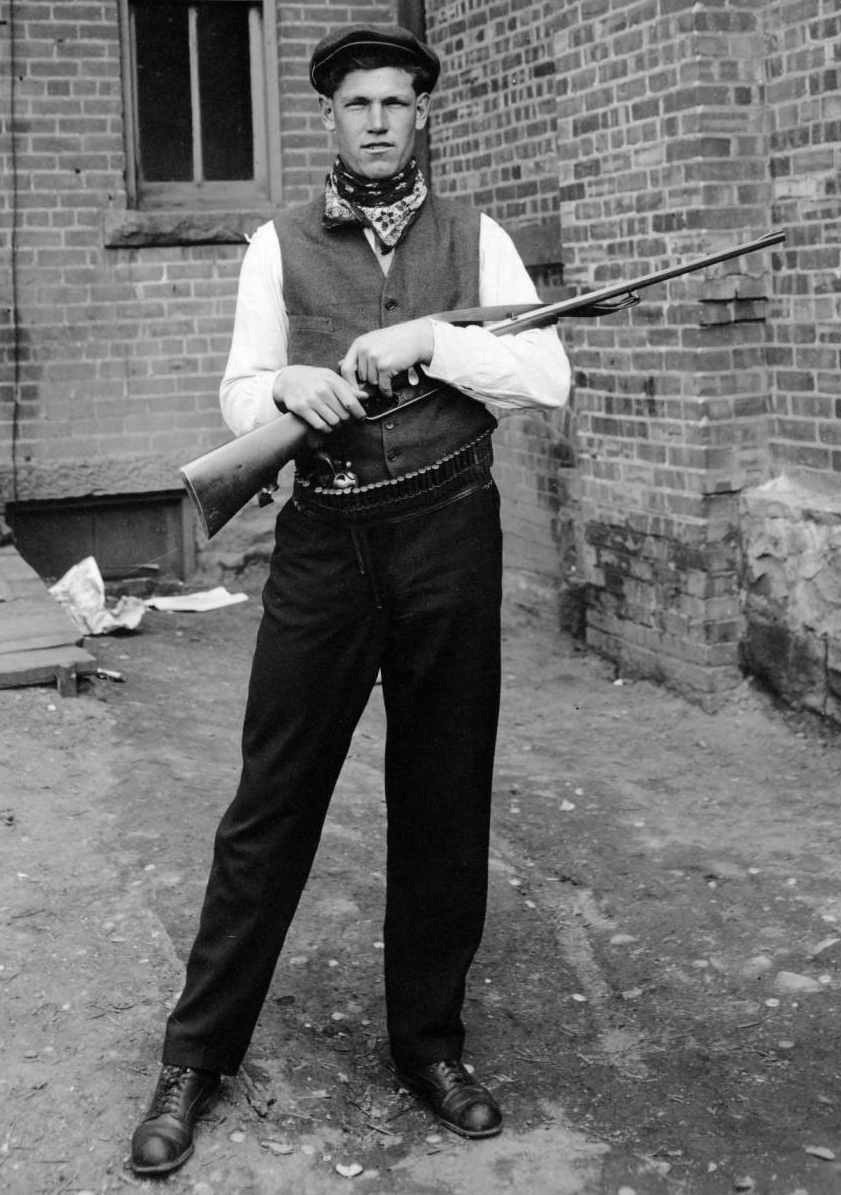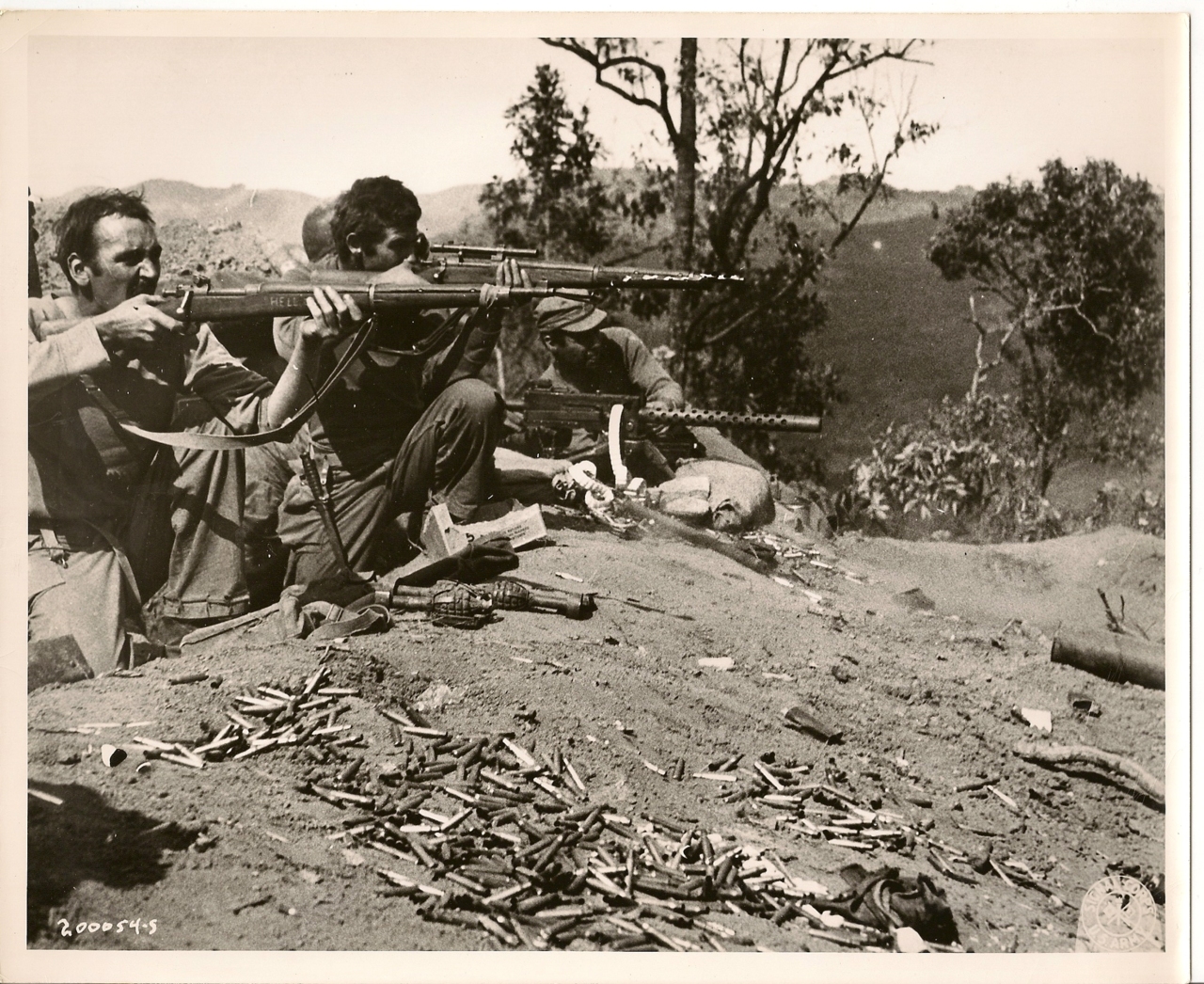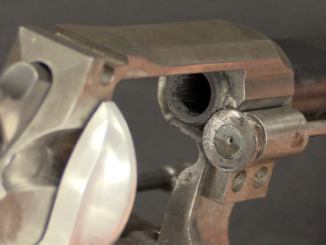Consider the problem of the pocket revolver of the 1860s. In order to be small enough to be reasonably concealable and comfortable to carry, it would typically be made in .31 caliber. That’s not a lot of firepower…even back in those days when ballistics potency was rather less of a concern to buyers than it is today.But for the person who does want something more than 5 shots of rather small caliber, what is the solution?
Well, John Walch came up with an idea. Superimposed charges were not a new idea, but Walch took that concept and applied it to the pocket pistol. The idea of superimposed charges is that you load two complete sets of powder and projectile into a single chamber, and then have two separate firing mechanisms so that you can fire the front charge first and then the rear charge. This had been used in flintlock rifles for example, but Walch used it to double the capacity of a 5-shot revolver to 10 rounds. The Walch revolver had two hammers and a single trigger, which would drop the hammers in the proper order.
While to 10-shot capacity in a small package was a good idea, the gun suffered from some problems. If the rather long flash-tube to ignite the front charge in a chamber became clogged with black powder residue and the rear charge were then fired, the gun could explode. When it did work properly, it was even less powerful than a typical .31 caliber piece, as the double charges had to be a bit smaller than normal to allow space for both in the cylinder.
The guns were used by one company of Michigan Infantry during the Civil War, but never sold very well. Interestingly, they were actually manufactured by Oliver Winchester and the New Haven Arms Company…




Does make you wonder how they machined or cast/cleaned up the flame tube for the front charge? an interesting piece for a Winchester collection.
It looks like they drilled them at an angle
“Walch”
high quality photo-set of John Walch Pocket Model Revolver:
http://www.nramuseum.org/the-museum/the-galleries/a-nation-asunder/case-38-arms-for-the-union-union-pistols/john-walch-pocket-model-revolver.aspx
.36 version:
http://www.peashooter85.com/post/45309126831/walch-12-shot-navy-percussion-revolver-invented
As Winant relates in Firearms Curiosa, the Walch revolvers were made in several different models. The earliest had a single trigger, which tripped first a long hammer on the right to fire the front charge, then a shorter hammer on the left to fire the rear charge in each chamber. If you didn’t let up on the trigger instantly after the first charge fired, the left hammer would also drop and fire the second. With wear, this version would end up dropping both hammers simultaneously, regardless of what the shooter did.
This was soon replace by the two-“short” hammer type with the long flash tubes for each front load, then by the more-or-less final type with two triggers, to avoid the multiple-discharge problem (s much as it could be avoided with a Rube Goldberg setup like this).
They were made in .31, .36, and .44 calibers, in both brass and iron framed versions, with ten-shot cylinders in the smaller models and twelve-shot in the larger ones.
The large frame models had actual trigger guards instead of sheath-type spur triggers, and at a glance could be mistaken for a Colt 1851 copy as were sometimes made in Europe back then. The double trigger gave them away pretty easily, though.
The vision of a multiple discharge in a 12-shot Walch somehow brings a frag grenade going off in you hand to mind.
Even loopier was the Le Page 12-shot, six-barrel pepperbox of the same time period, from France. Double-action, linear hammer inside the frame rather than an Allin-type “bar” hammer, and two nipples per barrel. The DA system indexed the barrels one-twelfth of a turn for every trigger pull, to allow firing first the front and then the rear charge ala’ the Walch.
An MD on this monster would probably have gone off a lot like either one of Manton’s seven-barrelled volley guns, or a Gatling gun.
cheers
eon
“superimposed charges”
What if both powder charges will ignite (lets assume that user forgot to load mid bullet)? Will gun be destroyed?
Superimposed charges always reminds me Greene rifle (which don’t use superimposed charges, bullet-powder-bullet-powder) but bullet-powder-bullet, rear bullet acts as gas seal (many pre-metallic-cartridge rifles has problems with gas leakages at breech):
http://www.nramuseum.org/guns/the-galleries/a-nation-asunder-1861-to-1865/case-15-union-muskets-and-rifles/greene-breechloading-underhammer-percussion-rifle.aspx
Generally, a simultaneous discharge in any superposed load arm bursts the barrel at the chamber. In a revolver like the Walch, detonation of other chambers is entirely possible, much like the “frag grenade” effect I mentioned above.
One time Joseph Manton made a double rifle gun that he was sure could take seven balls in each barrel in front of a single doubled charge, in essence firing two seven-shot bursts. When he tried to fire it, the entire force of the charge was vented out through the cap nipple. The gun was uninjured, and so was Manton, a testament to his artistry.
He then unshipped the barrels and removed the breechplug, to find that the seven balls, compressed upon each other, had only moved about four or five inches.
Regarding accidental superposed loads, W.H.B. Smith noted that after the Battle of Gettysburg, of 37,574 rifle-muskets salvaged from the field after the battle, 6,000 had one load in the barrel; 12,000 had two; another 6,000 had anywhere from 3 to 10 loads. One had 23 loads in regular order. The rest were unloaded. Some of those with one load had been loaded “wrong end first”, with the bullet in back; others had been loaded but not capped; some others had o ramrods, the rod having been lost or bent.
What this means is that if we consider only the rifle-muskets with “superposed” loads, 18,000 soldiers in that battle were combat-ineffective due to disablement of their rifles. This is roughly one-fifth of the men who were there.
Say what you like about breechloaders, but they are very difficult to load so ineptly as to disable them.
cheers
eon
Other soldiers feared killing more than being killed. They were also unable to keep up with the cycle of loading and then firing with everyone else, so they just kept stuffing powder and balls down their muskets without pulling the trigger once.
Were the steel frame steel or cast iron?
Mostly wrought iron; this was generally the full-sized “army” revolver. The pocket and “police” sized revolvers were mostly brass-framed.
cheers
eon
Wrought iron? really? I would have thought if not brass then steel. Are you sure?
Did they come with some kind of ramrod or did the owner have to provide one?
There used to be a wonderful publication available about superimposed load firearms via the cheaperthan dirt website. it seems the concept varied in levels of safety depending on the gun. some were basically able to take an accidental chainfire quite safely. one safer sounding system only took two loads and had a recessed rear chamber for the powder allowing the rear ball or wadding to better seal it against the front charge. if fired in the wrong order then hopefully it’d perform like a weak proof load. there certainly were plenty of tales of injury too but the idea doesn’t have to be dangerous if well executed.
It would have been good to see about loading this thing. Was there any kind of loading lever or rod? How were the superimposed loads separated? Was the ‘back’ bullet enough of a barrier, or was some special wadding used.
Clearly, the two loads had to have a controlled depth so the primer charge went where it was wanted.
Very interesting gun, and dangerous too.
Never heard about a revolver like this one.